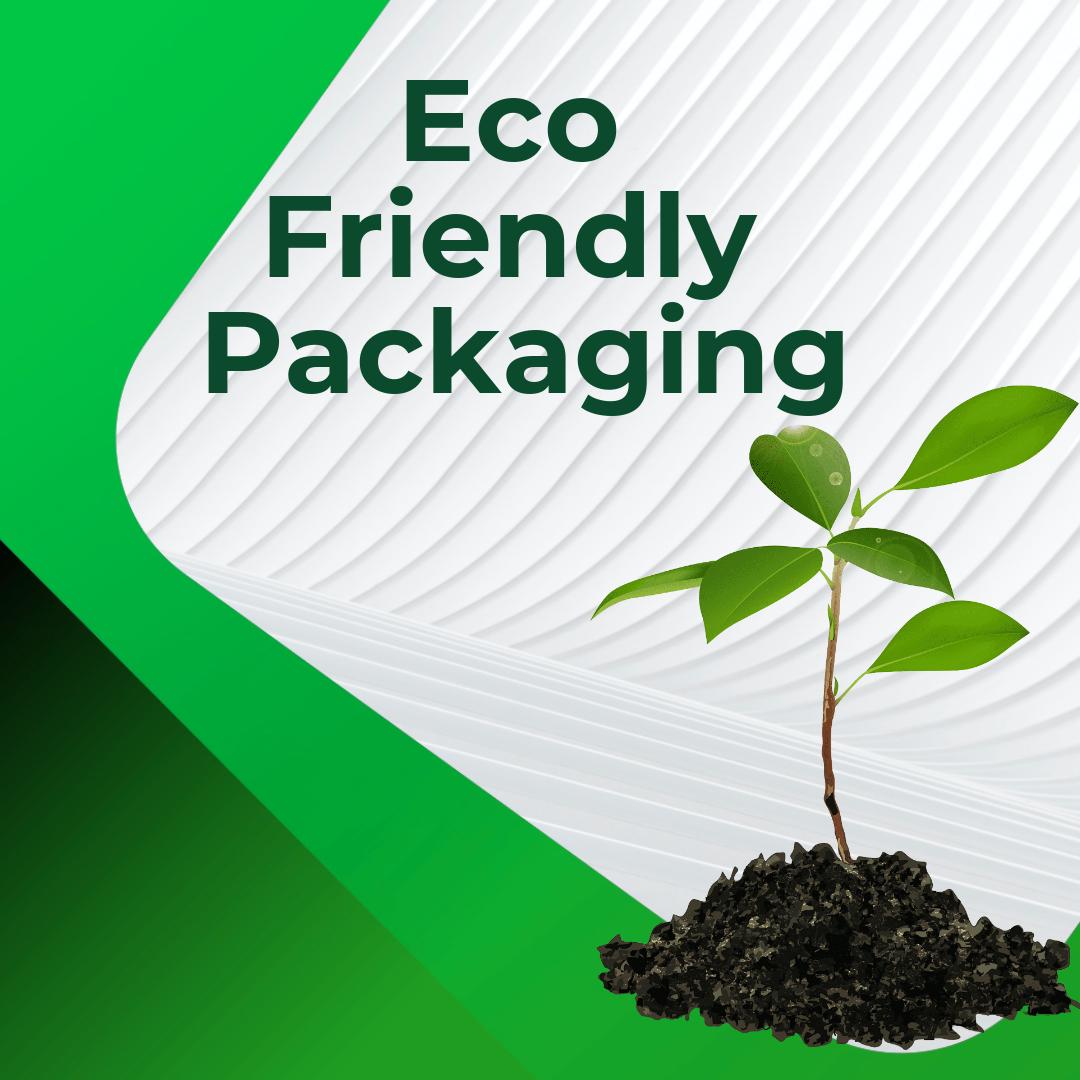Visit the Box Depot Shop, and our team will help you find the right solution.

If Bubl Air Cushioning Packaging is Plastic, How is it Eco-Friendly?
Air-filled packaging cushions are a cost-effective packaging solution for environmentally minded businesses. Consisting of 99% air and only 1% material, BUBL Packaging drastically reduces material usage and shipping weight compared to void packing with paper.
Increasing interest in eco-friendly materials has ended up in a debate between paper and plastic packaging. Paper is often hailed as being easily recyclable, while plastic is known for its light and durable qualities. But it is not always clear which material comes out on top overall?
So, we took a look to see how paper void fill compares with HDPE air cushions from an environmental perspective and also to work out which is the most economical.

The Environmental Protection Agency reports that paper must be reused at least three times to negate its higher climate warming potential, compared to plastic. This is because it takes more than four times as much energy to manufacture a brand new paper bag as it does to produce a brand new plastic bag. You can only imagine what the difference would be for producing material-heavy paper void fill, compared to air cushions consisting of 99% air!
Paper production also releases a higher concentration of toxic chemicals than in the making of thin plastic. In total, paper production generates 70% more air and 50 times more water pollutants than making the equivalent amount of plastic.
Lastly where do the raw materials come from and what damage is done providing these raw materials for use? Paper is generally viewed positively as it is made from renewable resources (trees) and not oil or gas. However, cutting down trees at an accelerated rate causes deforestation, which leads to loss of wildlife habitat, and also reduces the amount of CO2 capture. Meanwhile, thin plastic film is commonly made from the by-products of oil refining, using up what’s left from the fuel industry.
When it comes to void fill in particular, paper void fill is much heavier and uses about 5 times as much material to fill the same space as BUBL Packaging air cushions.
From the perspective of which is the most economical The Environmental Literacy Council estimates that one lorry of plastic carriers could transport the same number of bags as seven lorries filled with paper carriers. That’s because paper bags weigh more than plastic ones. As a result, vehicle emissions and fuel consumption rise as the weight of shipments grows.
The difference is even greater when it comes to void fill. Paper is much heavier and uses about five times as much material to fill the same space as BUBL Packaging air cushions. That equates to approximately 35 vehicle trips for paper void fill than BUBL Void fill.

Of course, plastic doesn’t come without its issues. Virgin plastics are widely criticised for their relatively low recycling rates, which is an especially acute problem with materials like polystyrene.
Once upon a time, I discovered what I thought was a wonder-material known as "biodegradable green bubble wrap". Being a curious soul(!) I put some outside in the garden, to see just how long it would take to "biodegrade" ... imagine my horror when, a number of months later, I discovered a gloopy gungy mess in my garden! A few months after that, the manufacturer publicly admitted that they hadn't done as many tests as they probably should have, and conceded that the chemicals they'd used made it definitely not "biodegradable"!
Following this, it made me determined to find packaging solutions that were not only cost-effective but also as kind to the environment as possible!
Maeve, Box Depot
However BUBL Packaging cushions are made from 100% HDPE; and HDPE is one of the easiest plastics to recycle, and is widely recycled, with recycling rates on the increase as Ireland builds its recycling infrastructure.
So put simply – paper and cardboard are not the golden panacea that they are often perceived to be, and plastic is not the pariah that it is perceived to be either. Both have issues.
But in our opinion, BUBL Packaging is clearly a better solution overall, providing better protection, lower polluting emissions, has a lower carbon footprint and is more cost effective too.
With Bubl Packaging options that can protect such varied products as mobile phones, iPads, tablets, laptops, wine bottles, fragile "bag-able" products (there's even the option to get custom Bubl Packaging to accommodate gravestones and airplane engines, if you wish to contact us about these!) we are sure that Box Depot will be able to assist you with this wonderful protective packaging solution!

Leave a comment